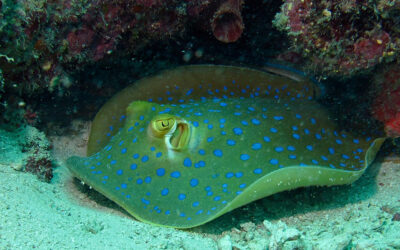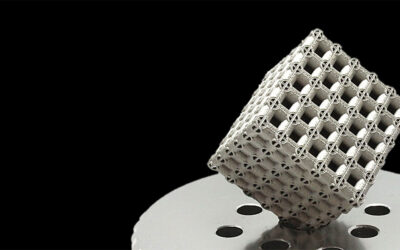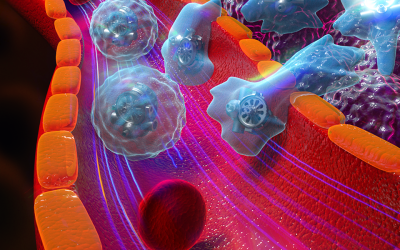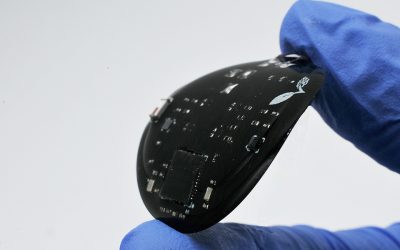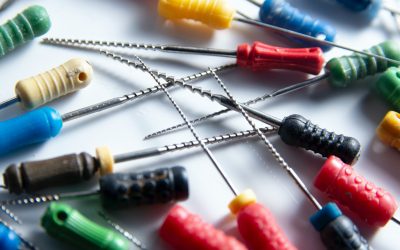Nikolaus Korber recommends “Concepts of Nanochemistry” by Ludovico Cademartiri and Geoffrey A. Ozin, a “fun to read” textbook with high didactic quality addressed to university teachers, students, and the interested general public.
“One of the criteria for assessing the maturity of a new subdiscipline of chemistry is whether it can and should be taught in the first years of the academic curriculum. It can be argued that subjects that rely heavily on interdisciplinary cooperation—which nanoscience certainly does—should only be included in the later stages of the education of future chemists, when they have reached a solid understanding of the fundamentals of their own scientific discipline.
After all, it is a common misconception about interdisciplinarity that, in order to foster interdisciplinary research, you need scientists with interdisciplinary training. The opposite is true: one needs people who are well-grounded in their respective subjects, but have different skills and viewpoints, and are working together to solve a common problem. Academic curricula that try to branch out into a multitude of scientific subjects from the very beginning tend to produce confused students, who know bits and pieces in several fields but have not developed the sense of belonging to a specific scientific community. On the other hand, for students to develop an integrated view of chemistry depends on the contributions of different aspects from the traditional sub-disciplines of inorganic, organic, and physical chemistry, biochemistry, and several others.
The authors of Concepts of Nanochemistry argue that nanochemistry could become the basis of one of these introductory courses, and they have set out to write a 260 page textbook for first-year students with little or no prior background in chemistry. Accordingly, this introduction to nanochemistry was also meant to be accessible for students of other subjects such as life sciences and physics. To give my verdict at the outset, the authors have succeeded in this endeavor beyond any reasonable expectations.
Concepts of Nanochemistry offers just what the title says, six concepts that enable the reader to perceive, to understand, and to order the diversity of nanoscience phenomena. The six concepts are “surface”, “size”, “shape”, “self-assembly”, “defects”, and “BioNano”, and all of these and their meaning to the nanoscience world are explained in an introductory chapter. Note that size, which usually tends to be in the foreground in many nanoscience texts, is here firmly kept in line by five other concepts that are given equal weight. The authors then plunge directly into case studies, which take the reader to the most recent and advanced topics of nanoscience research. To illustrate their points they choose six substances as examples, and their selection covers the material world of chemistry extremely well. Silica stands for oxides of nonmetals, gold for metals, polydimethylsiloxane for polymers, cadmium selenide for semiconductors, iron oxide for transition metal oxides, and finally elemental carbon for nonpolar covalently bonded materials. Each of these substances has a chapter, and therein are six subchapters exploring the “concepts” for each substance. During this transparent and rigid discourse, the authors cover every major topic and development of nanoscience, from photonic crystals, plasmon resonance, and microfluidics to superhydrophobicity, quantum dots, and superparamagnetism, and many more. In contrast to other textbooks, you will not find these terms in the subchapter titles, but you can find them in the comprehensive index, with a careful, simple, but not simplistic explanation of each when they come up, relying on ideas and context rather than equations and rigid treatment.
The text is accompanied by definitions in the margins, right next to the place where a term is used for the first time. Carefully drawn illustrations, one for each subchapter, help the reader to visualize the phenomena and processes discussed. The same comment applies to both the figures and the text: they are expertly condensed, charged with meaning, and of outstanding didactic value. This leads to an interesting reading experience: the book is very accessible, yes, really fun to read, yes, but definitely not light reading. Because of the authors’ fearlessness in treating complex subjects in an introductory text, there are so many lines of thought to follow, many well-made arguments to savor, that you will need time, but you will be richly rewarded.
Throughout the narrative, which addresses the reader directly, several insightful reflections on science, progress, and natural philosophy are hidden like nuggets. Here is one of them, in the middle of the subchapter on iron oxide—size: “If everything were known or mostly known or even knowable, as some non-scientists believe, there would be no need for science in the first place. We need science to deal rationally with our immeasurable ignorance”.
Each chapter is accompanied by about 20 carefully selected citations, mainly from the very recent primary literature. Also there is always a last subchapter quaintly titled “NanoFood for thought”, which lists student exercises that range from simple recapitulation of the material to advanced questions requiring transfer of knowledge. The book ends with two brief case histories, which serve to demonstrate the usefulness of the “concepts” in understanding state-of-the-art nanochemistry publications. Both the original articles that are discussed date from 2008, and the first article is superbly chosen, as it combines topics such as templating, chemical vapor deposition of carbon nanotubes, self-assembled monolayers on gold, and several more, for a really cool example of amphiphilic nanorods.[1]
The overall didactic quality of the book serves as a confirmation of a famous statement by the expert on university learning, Ken Bain: “Outstanding teachers know their subjects extremely well”.[2] The authors, Ludovico Cademartiri and Geoffrey A. Ozin, have already published the second edition of the comprehensive textbook Nanochemistry: A Chemical Approach to Nanomaterials, which is an advanced text serving as a complement to Concepts of Nanochemistry; Geoffrey Ozin is, of course, universally recognized as a founding father of nanochemistry.
In conclusion, nanochemistry really seems to be mature enough now to be included in the first years of studying chemistry. The book Concepts can serve as a superb guide into nanochemistry for university teachers, students, and the interested general public. It can be emphatically recommended.
Read it, or you will be missing something extraordinary.”
Department of Inorganic Chemistry
University of Regensburg (Germany)
Ludovico Cademartiri, Geoffery A. Ozin,
Foreword by Jean-Marie Lehn
ISBN: 978-3-527-32626-6
282 pages
[1] F. S. Ou, M. M. Shaijumon, P. M. Ajayan, Nano Lett. 2008, 8, 1853. [2] K. Bain, What the Best College Teachers Do, Harvard University Press, Cambridge, 2004.











